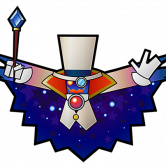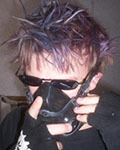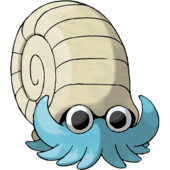Search the Community
Showing results for tags 'pearl'.
-
-
- wild pokemon
- editor
-
(and 2 more)
Tagged with:
-
Version 1.1
2071 downloads
Pokémon Data Editor DS (Diamond & Pearl) HowTo: - Dump the personal.narc with Nitro Explorer [You'll find the NARC in \poketool\personal] - Open PDEDS, open/select the NARC file - Edit the data using PDEDS and save (NOTE: You need for each Pokémon !!) - Import the NARC back with NitroExplorer - Done =D Author - D-Trogh-
- data editor
- diamond
-
(and 1 more)
Tagged with:
-
-
In land_data.narc the length of the second block is supposed to be multiple of 0x30. This is true for all maps except for nr 483 (m_dun2405_00_01c). It has the lenght 146(0x92) instead of 144(0x90). That means there are 3 buildings and two additional bytes (0x0d 0x0a) Why?! (I use the Pokemon Diamond ROM)
-
New and improved BTX Editor 2.0 http://www.mediafire.com/file/49nycebcfywyh2y/BTXE old post
-
Sorry guys but the results are in and this isn't working. I don't know what else to try so consider this project dead until further notice. The following is kept for informational purposes only: MUST-READ: There are several important pieces of information that you should be aware of here: I recommend that you DO NOT use the method I am going to detail here. This method is potentially risky and much more restricting than simply using a save editor (which I do recommend). This requires your copy of D/P/Pt/HG/SS to be retail; no flashcards. This requires at least one DS "Phat" or DS Lite. The second DS can be any model DS, as long as it will run Black/White from a flashcard. This requires that you flash the firmware of your DS "Phat" or Lite. Flashing carries an inherent risk of bricking your device and/or voiding your warranty. I am not responsible if that happens. That said, I have flashed my DS without a problem and will provide guidance for you. Firmware can be flashed back to its untouched state later. If after reading the above bulleted items, for whatever reason, you still want to try this method, follow the step-by-step instructions below. For now the modifications I've made are only available as part of Project Pokemon's English translation patch. Make sure you have applied the latest version from here to your B/W ROM. Just let me know if this doesn't meet your needs. Now we need to flash your DS "Phat"/Lite. Download FlashMe from here and place it on your flashcards's microSD(HC). Make sure your flashcard is in the Phat/Lite you want to flash. Boot your flashcard and run FlashMe. As it will tell you, you should plug in the charger before continuing. Once that's done press x+b twice. Now you'll see a new paragraph followed by a line reading "Progress:" ... If the progress percentage goes right to 100 and you get a new paragraph saying it's safe to turn of the DS, you're done. Most likely in that last step you didn't make it past 0%. If that's the case, get out a small Phillips screwdriver and a small flathead screwdriver. Use the Phillips to open up the battery compartment of your DS. Depending on if you have a Phat or Lite, you will see something like this: The part circled in red might have a bit of paper stuck over it, you will have to remove it. You can either discard it or try to stick it back when you're done. Now you have exposed the SL1 terminal (circled in red). As FlashMe says, we need to short this. Use your flathead screwdriver to bridge the two sides. Make sure you're applying constant, firm (but not hard) pressure on the screwdriver. Flip your DS around, still holding the screwdriver in place, and have another look at the percentage. It should be progressing upwards now. If it pauses don't panic, just adjust the screwdriver a bit and it should continue. Continue holding the screwdriver until you get a message that it is safe to turn off the DS. Turn it off and you're done flashing. You can ditch the screwdriver and put your battery cover back on. Upon turning on your DS again you'll notice that the health and safety screen is gone, this is normal. You can now PokeShift/Transfer Machine as you normally would, only with an English game. Just make sure the English game is in your flashed DS and your B/W is patched as mentioned in step one. Enjoy! Technical Note (You don't need to read this.) Some folks out there might be wondering why it's necessary to flash the client DS. After all, nobody has needed to flash a DS since practically the beginning of time right? Well, as you probably know B/W uses download play for cross-generation communication. That brought in an ancient problem in respect to editing the regions. The region is of course specified in the download play ROM (which is inside and sent from the B/W ROM); problem is, Nintendo decided in developing the original DS that all download play ROMs must be RSA signed to prevent unauthorized code execution. Lucky for me there was an ancient solution to this ancient problem: flashing, which removes the RSA signature check from the DS's firmware, freeing it to run my slightly modified ROM. =) I'd like to give a big thanks to to those who worked on FlashMe and its custom firmware; this wouldn't be possible without them.
-
I got that map_matrix stuff done. The extractor is here (exports to MediaWikicode.). Yes, the coding is horrendous, I didn't put much effort to it, it works. /* By AngelSL, remove credits, whatever, as long as it complies with the below */ /* This program is free software: you can redistribute it and/or modify it under the terms of the GNU General Public License as published by the Free Software Foundation, either version 3 of the License, or (at your option) any later version. This program is distributed in the hope that it will be useful, but WITHOUT ANY WARRANTY; without even the implied warranty of MERCHANTABILITY or FITNESS FOR A PARTICULAR PURPOSE. See the GNU General Public License for more details. You should have received a copy of the GNU General Public License along with this program. If not, see <http://www.gnu.org/licenses/>. */ /* DISCLAIMER: THIS FILE IS FOR EDUCATIONAL PURPOSES ONLY, blah blah blah */ using System; using System.Collections.Generic; using System.IO; using System.Linq; using System.Text; namespace MapMatrix2Table { class Program { static void Main(string[] args) { if(args != null && args[0] == "/all") { args = Directory.GetFiles(Environment.CurrentDirectory, "map_matrix_???"); } foreach (string s in args) { if(!s.EndsWith(".bin") && !s.EndsWith(".hex") && s.Contains(".")) {Console.WriteLine("Skipping " + s);continue;} FileStream fs = File.OpenRead(s); BinaryReader br = new BinaryReader(fs); byte columns = br.ReadByte(); byte rows = br.ReadByte(); int entries = rows*columns; ushort[,] matrix = new ushort[columns,rows]; br.ReadInt16(); string prefx = new string(br.ReadChars(br.ReadByte())); int row = 0; int column = 0; for(int x = 0; x < entries; x++) { if(column == columns) { column = 0; ++row; } matrix[column,row] = br.ReadUInt16(); ++column; } File.WriteAllLines(s + ".txt", ProcessAndDestroyMatrix(matrix, columns, rows, prefx)); } } static string[] ProcessAndDestroyMatrix(ushort[,] matrix, byte columns, byte rows, string prfx) { List<String> ret = new List<string>(); ret.Add("{| class=\"wikitable\" style=\"text-align:center; width:auto; height:auto;\" border=\"1\" "); // Table headers { StringBuilder headers = new StringBuilder(); headers.Append("! x"); for (byte x = 0; x < columns; x++) { headers.Append(" !! "); headers.Append(x); } ret.Add(headers.ToString()); } for(int row = 0; row < rows; row++) { ret.Add("|-"); ret.Add("! " + row); for(int column = 0; column < columns; column++) { StringBuilder line = new StringBuilder(); line.Append(matrix[column, row] != 0 ? "| style=\"background-color:yellow;\" | " : "| "); line.Append(prfx); line.Append(column.ToString("00")); line.Append("_"); line.Append(row.ToString("00")); line.Append("c"); line.Append("<br />"); line.Append(matrix[column, row]); ret.Add(line.ToString()); } } ret.Add("|}"); return ret.ToArray(); } } } If anyone would like to make their own parser, then look in the wiki for the article regarding the format. However! I'm not certain whether the file is supposed to be read by column or row, try both. Or derive it from my source ^ Anyway, we can see that the game uses their own internal name. An example is map03_27c which is Twinleaf town. If you extract land_data_release.narc and use "grep map03_27c *" to grep files containing that, you would see that only 1 file contains that aka the file containing Twinleaf's data. What we need to do now is to find where the game stores the map ID/intername/etc to real displayed name stringtable. The game could identify this by map ID, intername, or even index of the entry in land_data_release, or something else.
-
Deciphering data/fielddata/mapmatrix/map_matrix.narc in Diamond/Pearl's contents. I would appreciate it if anyone that has looked into it before provide their insight. And if you figured out the structure of the contents, I'd appreciate it if you could post it here. I do know the structure of a NARC file, I'm looking into the contents of the map_matrix.narc file. If Alpha reads this, SCV said that you might know more about map_matrix.narc's contents. Shoutout.
-
Version 1.7.1
26253 downloads
PKHeX plugin to find and edit Feebas fishing spots in Gen 3, 4 and 8. How to use Put the plugin into the plugins folder in your PKHeX directory, then access it from the Tools menu. Ruby, Sapphire and Emerald as well as Diamond, Pearl, Platinum, Brilliant Diamond and Shining Pearl are supported. Note: Win 10 might block DLL files downloaded from the internet. In that case right click the plugin file, go to properties and check "unblock" (as seen here). Example of how to unblock: Any questions, issues or suggestions? Create a post in my support thread, create an issue on Github or send me a DM! Credits & Thanks Kaphotics for PKHeX. TuxSH for his extensive research about Feebas fishing spots (RSE, DPPt). suloku for his Feebas Fishing Spot tool that has inspired me to make this plugin. foohyfooh for BDSP support. Translators: Chinese (CHT/CHS): ppllouf & wubinwww Source -
Hi all, I am a IT student and I am currently trying to reverse engineer the inner working of the Gen IV Distribution ROM. I already figured out the basics but... Right now, I am facing an issue with the way data is encrypted. I already know of tools such as WC4PCD or PokeGen, PokeHex... but I am trying to understand and create my own program to decrypt and reencrypt all by myself. So I am asking if any one here as any leads or straight up know what encryption algorithm is used. I obviously did some research but no luck yet. (Chat GPT told me to XOR the file but idk what key to use). Thanks in advance, and my apologies if I made any english mistake
-
All I really want is Diamond, pearl and Platinum save files (.sav) that have entered at least once in hall of fame. I have overplayed this gen and I don't really feel like dedicating myself to playing it another 3 times. My only wish aside from that is leaving Darkrai and Shaymin untouched as this is going to be used as shiny hunting saves. If you want to throw in the key items for it cool! If not I would probably have used the void glitch anyway. If the other legendaries are there too that's great, otherwise, eh I don't care since I will hunt them in USUM anyway.
-
Honestly not sure if ROM hacking is still big these days, but I've decided to try and make a ROM hack. And hopefully one that doesn't crash. I've tried making GBA Pokémon ROM hacks, but I'd end up breaking them pretty badly, so I'm hoping I can get some people together to help me out with this. I will be using Pokémon Pearl for the base, and plan on making 2 version, similar to how they're done officially. Right now, I'm on the planning phase, as I want to first make the layout of the new region, as well as naming the region. I'm open to ideas, so if you got some, fire them at me, and I'll see what I think about them. I plan on making a new region, new Pokémon, New legendries, basically changing everything, making it feel like a new game, rather then a ROM hack. I plan on also making new Trainer sprites for the main characters throughout the journey, and maybe some for the trainers, depending on the limitations of what can be done. All in all, I have very limited knowledge of how to do this, so help is more then appreciated Update 1 December 5th, 2019 Not much progress has been made. Only maybe some small pokemon edits, but not much else. SDSME still crashes when trying to import sprites for Trainer Classes, so I'm pretty limited on what I can do at the moment. Maybe in time, when I get a better computer, could I possibly be able to make progress. I'll still get what I can done, to at least have something started to show off.
- 4 replies
-
- 1
-

-
- pearl
- work in progress
-
(and 1 more)
Tagged with:
-
I've played a few Soul Link's so far and every time I start my play session for the day it's always kind of an annoying process. Loading up 2 separate emulators, 2 roms, having to rekeybind the controllers every time. I was wondering if someone would be able to make a program that could make it easier. If your unfimiliar with a Soul Link Nuzlocke, heres the rules. 1- Any Pokémon that faints is considered "dead," and must be released or stored in a specified PC box for "dead" Pokémon. 2- You can only catch the first Pokémon encountered in each area, and none else. If the first Pokémon encountered faints or flees, there are no second chances. 3- You must also nickname all of your Pokémon, for the sake of forming "stronger emotional bonds." 4- In a new area, the first encounters for both players will be, "linked," together until death. 5- If one Pokémon in a linked pair is placed in the PC, it's Soul Link partner must be placed in the PC as well. 6- If one Pokémon in a linked pair dies, it's Soul Link partner is considered dead as well. 7- If one player fails to capture their first encounter in an area, the second player must forfeit their encounter in their corresponding area. 8- Across both players parties, primary typings may not be repeated. Basically what I'm looking for is a program that emulates 2 roms side by side and be able to control them individually. I've thought of a few features to make it better. Features -Emulators from all consoles built in - Ex. VBA, Desmume, and Citra -Saves both roms under 1 "project" and loads them on the same side every time -Type Chart ready -Online Remote Play - Be able to join your friends session online to see and control one of the games. -Games connected locally so you can trade and battle -Database where you can input your linked pokemon pairs and where you caught them -Built in Pokedex Database (Not necessary but would be helpful) -Program reads both your teams and displays them between the game (I'm aware that's not an easy ask but if it's possible, why not) I feel like except for a couple of them this is a completely possible thing to create. I know it probably wont happen but I just thought I'd get the idea out there. I love doing Soul Links and I'm so happy people found a way to make Pokemon Co-op. Thanks for your time.
-
- 6
-

-

-

-
- rom
- multiplayer
-
(and 43 more)
Tagged with:
- rom
- multiplayer
- nuzlocke
- co-op
- program
- Randomized
- remote
- play
- vba
- desmume
- citra
- no$gba
- nds
- 3ds
- gba
- gbc
- red
- blue
- silver
- gold
- crystal
- ruby
- sapphire
- emerald
- diamond
- pearl
- platinum
- soulsilver
- heartgold
- black
- white
- black 2
- white 2
- x
- y
- omega ruby
- alpha sapphire
- sun
- moon
- ultra sun
- ultra moon
- yuzu
- firered
- leafgreen
- playthrough
-
Greetings, Me and a bunch of friends have started a replay of the Gen 4 games because of nostalgia. I read about the events Gen 4 used to have (Azure Flute, Oaks Letter etc) and I would like to edit my savegame (it's a physical card) and add these items in. I own a dongle, a PowerSave 3DS one. I have searched about a bit about how to alter saves, and most websites say a dongle is neccesary, but I don't know at all what to do after I put my Pearl in the dongle. I don't know how to open the save in PKHeX (happened to read about this). Thanks for reading and I hope you can assist me.
-
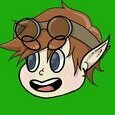
Diamond Pokémon diamond save file (not complete)
Thelep31 posted a topic in Saves - Files and Requests
I ran into a problem just right before going to get Dialga in Pokémon Diamond, and I was unable to battle the two grunts to trigger team galactic leaders to battle me. I’m looking for a Pokémon diamond save around this point, if possible. If you have any diamond save that would be greatly appreciated . Thanks in advance! -
It's been a loooong time, but finally, I've discovered how the BDHC files work. Please, if you are gonna copy this post in other site, give credits! First of all, I have to thank JayT, who discovered how is the file structured in different parts. Now, I'm gonna explain what does each part. Part P Sets the coordinates of certain points, used later to build rectangles or "plates" of different heights in the Part S. The structure of each element is the following one: 00 00 XX XX 00 00 YY YY XX XX are the coordinates in the X-axis, and YY YY the Y-axis ones. Keep in mind that the origin of coordinates is located at the midpoint of the map, not in a corner. This means that the lower right corner always use positive numbers, but the upper left corner instead must use negative numbers. Remember that FF FF = -1, FE FF = -2, FD FF = -3... The four tiles in the midpoint of the map are (FFFF, FFFF), (0000, FFFF), (FFFF, 0000) and (0000, 0000) respectively. Thus, the point of the upper left corner is: 00 00 F0 FF 00 00 F0 FF And the lower right corner: 00 00 10 00 00 00 10 00 Part Q It may be related to the stairs, but I need to investigate further. I've already solved this part, but I've still got to translate it to English Part R It sets the different heights where the hero can be in different rectangles or "plates". The structure of the elements of this part is: MM MM ZZ ZZ ZZ ZZ refers to the complete-tiles height, ie; for example if the character is at a neutral level, then ZZ ZZ = 00 00. If we climb some stairs and now we are in a height +1, then ZZ ZZ = FF FF (at higher height, instead of growing, it decreases) . If we were at a height +5, it would be FB FF. And if for example we were at -2; 02 00. MM MM measures, instead of full tiles, 65536-ths of tile. For not to talk complicated things; MM MM = 00 80 if the character is in a lake (it would be half a tile down, ie -0.5 tall) and MM MM = 00 00 if the character is anywhere else. For example, if we have: 00 80 FF FF it would mean: FF FF = Height +1 00 80 = Height -0.5 Total height = +0.5 Part S Link points of Part P to create the "plates" or rectangles, and assigns a height of an element of Part R. AA 00 BB 00 QQ 00 RR 00 AA is the number (in hex) of the Part P element where the point of the rectangle in the upper left corner is. Remember that the first element is 00, the second is 01, the third is 02... BB is the number (in hex) of the Part P element where the point of the rectangle in the lower right corner is. RR is the number (in hex) of the Part R element which establishes the height of the plate. If in Part P, for example, we have this: 00 00 F0 FF 00 00 F0 FF 00 00 10 00 00 00 10 00 And in the Part R we have: 00 00 FE 00 00 00 01 00 In the S part we have to write: 00 00 01 00 00 00 00 00 so we create a plate covering from (-16, -16) to (16, 16) (ie, the whole map) and setting a height in the Z axis +2. If instead out: 00 00 01 00 00 00 01 00 It would be the same as the previous one, but with a height of -1. Part T It divides the map in horizontal strips. Everything must be divided so if we move vertically (up or down) and thus we get in/out of a lake, stairs or similar, we must also be entering a new strip. It's hard to explain; the game can not detect when you enter an area with different height when you move vertically in the same strip (horizontally no problem) so you have to create a new separate strip. As I know it's hard to understand, here's a little picture: There is an element for each strip there. The structure of each element of Part T is: 00 00 YY YY NN NN UU UU Where YY YY is the Y-axis line where the lower limit of the strip is. NN is the number of elements of the Part U that are taken, and starting counting from element number UU UU. Do not worry, I'll explain later. For example, a map where there were two strips, one in the upper half and one in the lower half, would be: 00 00 00 00 NN NN UU UU 00 00 10 00 NN NN UU UU Part U It is a list or enumeration of adjacent plates/rectangles to the strip with which it is linked in Part T. That is, if I'm in the strip 00, Part T load a number of elements of the Part U where there are numbered all the plates where the player is or can access, from this strip. The structure of the elements of Part U is: SS 00 where SS is the number (in hex) of the Part S plate. Part U have many elements of these, and they are usually "segmented" in "zones". In Part T is loaded the number of items to be taken (NN NN) and the number it starts counting (UU UU). For example, in Part U we have: 00 00 01 00 02 00 04 00 00 00 03 00 04 00 And in the T part we are: 00 00 YY YY 04 00 00 00 00 00 YY YY 03 00 04 00 Then, from the first strip, we are or we can access the plates 00, 01, 02 and 04, while from the second strip we are or we can access the plates 00, 03 and 04. Remember they are all adjacent plates, ie, plates belonging to the strip and the ones which are in the limits but do not belong to it (ie, those plates whose height the game has to load while the player is in the strip).
-
This is a modification of Kazowar's BTX Editor. It's used to modify the BTX (texture) files used for overworld sprites in the NDS games. Kazowar stated that "BTX Editor is a horribly wrote program and is full of stupid limitations." But he gave me permission to decompile it, modify it, and re-release it. So I have. This version has been updated to support any of the character overworlds from HG/SS. There are still quite a lot of overworlds that it won't work with unless completely rewritten, like Pokemon, or anything not 32x32, or anything with more than one palette. I've also take the opportunity to change the interface. Buttons are now above the image, and the window will also resize to fit the image, rather than the reverse. I also changed the icon to differentiate it from the original. Usage: 1) Extract BTX files from the game, found in HG/SS at /a/0/8/1. 2) In BTX editor, hit [Open .btx]... and open a .btx file. 3) Hit [save .png as...] and save the image. 4) Modify that image. 5) Hit [Open .png] and open the modified image. 6) Hit [save .btx as...] and save the modifed .btx file. 7) Insert the new file into the game in place of the original. Download: http://www.mediafire.com/file/a4zjzn8kr8krgbc/BTX_Editor.exe
-
Hi all, I've been recently informed that Suction Cups does not work in the Sinnoh Region due to a coding error. I can't find any information on whether this is true or not and I'm lost where to look in the data to confirm this or not. Would anyone mind confirming this? It seems strange and it's honestly the first time I've heard of this. Much appreciated
-
Greetings, all. I am new here, so I apologize if this is in the wrong subforum. Now, what I am needing to do: My girlfriend and I are planning on playing all of the Pokemon games from gen 4 right up to gen 7. We both have homebrewed 3DSs with CFW and have the NDS Pokemon games as ROMS on R4i cards. The idea is to play HeartGold and SoulSilver> Platinum and Diamond> Black and White> Black 2 and White 2> X and Y> Omega Ruby and Alpha Sapphire> Sun and Moon, in that order. What we want to do is transfer Pokemon over each time we move over to the next pair of games. Each time we play a pair, we plan to catch all Pokemon available in that respective game, then move them all forwards to the next game. HeartGold/SoulSilver can trade to Platinum and Diamond, and Platinum and Diamond can trade to Black and White, and Black and White can trade to Black 2 and White 2, but each of these processes will take ages to accomplish, and there seems to be no way to trade Pokemon from Black 2/White 2 to X/Y when using an R4i card and a legitimate card is impossible to get in my country. So: Is there a way that I can batch export all Pokemon from a save (All .pkm/whatever files from the .sav) and the inject it into the next save? PkHex and PokeGen only allow for exporting and importing 1 Pokemon at a time, whereas I would like to do so as a batch to save a lot of time. I have .sav files on R4i and can make .sav backups for 3DS Pokemon games, I just need a way to transfer the Pokemon between them as a batch rather than individually. As a nitpick: Is there also a way that I can have Pokemon moved via this method be registered in the Pokedex for the game I inject them into? Thanks in advance and sorry for repeating myself in some parts
- 2 replies
-
- generations
- pkm
-
(and 15 more)
Tagged with:
-
A couple of years ago, I found that most of my team in Pearl had disappeared, apparently due to a heinous glitch. However, all their data is still on my copy of Pokémon Battle Revolution. I wish to know how to extract or copy the data on that game and get my missing team members back.
- 9 replies
-
- pbr
- pokémon battle revolution
- (and 11 more)
-
Ive searched youtube, forums, pokecheck, all types of sites to try and get it right but everytime i try to make a pokemon with pokegen for pokemon pearl something always comes out wrong to make my pokemon ineligible. I would very much appreciate if someone could make a personal video of the pokemon im trying to make. It might be a bit much to ask for just myself, but i would very much appreciate it. Anyone looking to help i can send the details of the pokemon, stats, trainer id etc etc...
-
I am making a Pearl/XD PokEmon Game. If you have any ideas of what i should add, please send me a message or reply to this thread. My current list of ideas is: No wild PokEmon Level 10 Eevee as Starter Double Battles Only Eevee uses Items to evolve in any of it's evolutions As soon as I have programs to make them: Shadow PokEmon, Shadow Moves, the possibility to capture Shadow PokEmon, Purification. If you know of any programs I can use to add PokEmon, Moves and Purification and remove that block preventing me from capturing Trainer PokEmon, message or reply please.
-
G4PS will take 2 or 4 images and build a single palette from them and then save all the images using the single palette as an 8bpp image to be used with PokeDSPic. example G4PS..rar
-
Well, after using the PokeRadar a lot, chaining, and having a few chains seemingly break for no reason, I was hoping to find out what exactly makes it work? I'm familair with ASM, but I'm not sure where I'd start with NDS. If anyone has information on solid evidence for how the PokeRadar works (mostly to keep the chain going, like how it calculates the chances of continuing the chain per patch), please post here.
-
Hi, lately I have been thinking of an idea for two pack Pokemon games. I have a storyline, legendaries, the Gym Leaders and Elite Fours on each side. My problem is I'm not a good programmer, so I was wondering if anyone can help me. This is the base storyline: You can't choose your gender in the game (I am hoping this is able to stop in whichever game ROM is used): You are male if your playing Pokemon (M symbol)-Pink and you are female if your playing Pokemon (F symbol)-Blue. Your professor is Juniper if you are (M symbol)-Pink and your professor is Oak if you are (F symbol)-Blue What has happened is Dialga and Reshiram tagged together to beat Palkia and Zekrom. Instead the battle caused a rip in all time steams of the world of Pokemon. With one rippled world is purely male humans and the other one being purely female humans. However you are that only other gender in that world, with another one we find out near the end. You go and find the reason this happened (like every other game). I will explain more storyline if I get this starting first. This means no one can take the idea off me. well this is the Legendaries, the Gym Leaders and Elite Fours: Gym Leader 1: Rock Pokemon: Geodude Lv10, Roggenrola Lv14 Gym Leader 2: Electric Pokemon: Pikachu Lv14, Plusle[(M symbol)-Pink]/Minun [(F symbol)-Blue] Lv16, Tynamo Lv18 Gym Leader 3: Normal Pokemon: Miltank [(M symbol)-Pink]/Tauros [(F symbol)-Blue] Lv18, Kecleon Lv20, Ditto Lv22 Gym Leader 4: Water Pokemon: Luvdisc Lv22, Basculin [(M symbol)-Pink is Red, (F symbol)-Blue is Blue] Lv24, Seaking Lv26 Gym Leader 5: Fighting Pokemon: Hitmonchan Lv26, Mienshao[(M symbol)-Pink]/Lucario [(F symbol)-Blue] Lv28, Heracross Lv28, Primeape Lv30 Gym Leader 6: Fire Pokemon: Ninetales[(M symbol)-Pink]/Arcanine [(F symbol)-Blue] Lv30, Houndoom Lv32, Torkoal Lv32, Heatmor Lv34 Gym Leader 7: Dragon Pokemon: Druddigon Lv34, Altaria Lv34, Vibrava Lv36, Altaria Lv36, Kingdra Lv38 Gym Leader 8: Poison Pokemon: Nidoqueen[(M symbol)-Pink]/ Nidoking[(F symbol)-Blue]Lv40, Crobat Lv40, Drapion Lv42, Weezing Lv42, Gengar Lv44 Elite Four 1: Dark Pokemon: Bisharp Lv45, Zoroark Lv45, Krookodile Lv47, Tyranitar Lv47, Umbreon Lv49 Elite Four 2: Psychic Pokemon: Gardevoir[(M symbol)-Pink]/ Gallade[(F symbol)-Blue] Lv45, Wobbuffet Lv45, Alakazam Lv47, Bronzong Lv47, Unown (? or ! I don't what one yet) Lv49 Elite Four 3: Ghost Pokemon: Sableye[(M symbol)-Pink]/ Spiritomb[(F symbol)-Blue] Lv45,Golurk Lv45, Chandelure Lv47, Jellicent [(M symbol)-Pink is Pink, (F symbol)-Blue is Blue] Lv47, Shedinja Lv49 Elite Four 4: Flying Pokemon: Vespiquen Lv45, Tropius Lv45, Gyarados Lv47, Mandibuzz [(M symbol)-Pink]/ Braviary[(F symbol)-Blue] Lv47, Emolga Lv49 Elite Four F: Mix Pokemon: Porygon-Z Lv45, Gastrodon [(M symbol)-Pink is Pink, (F symbol)-Blue is Blue] Lv46, Skuntank Lv47, Eelektross Lv48, Scizor Lv49, Kingdra Lv50 Catchable Legends in both games: Giratina, Jirachi, Landorus, Deoxys, Articuno, Celebi, Cobalion, Heatran, Rayquaza, Manaphy, Moltres, Entei, Raikou, Regice, Regigigas, Regirock, Registeel, Shaymin, Suicune, Uxie, Victini, Zapdos, Kyurem (some of these might not go in the game due to area in the game) Male Game Gym Leader 1: Brock Gym Leader 2: Lt. Surge Gym Leader 3: Norman Gym Leader 4: Crasher Wake Gym Leader 5: Chuck Gym Leader 6: Blaine Gym Leader 7: Drayden Gym Leader 8: Koga Elite Four 1: Sidney Elite Four 2: Will Elite Four 3: Morty Elite Four 4: Byron Elite Four F: Alder Main Legend: Dialga Catchable Legends: Reshiram, Ho-Oh, Latios, Darkrai, Azelf, Groudon, Mewtwo, Terrakion, Tornadus Female Game Gym Leader 1: Roxanne Gym Leader 2: Elesa Gym Leader 3: Whitney Gym Leader 4: Misty Gym Leader 5: Maylene Gym Leader 6: Flannery Gym Leader 7: Iris Gym Leader 8: Roxie Elite Four 1: Karen Elite Four 2: Caitlin Elite Four 3: Phoebe Elite Four 4: Jasmine Elite Four F: Cynthia Main Legend: Palkia Catchable Legends: Cresselia, Kyogre, Latias, Lugia, Mesprit, Mew, Thundurus, Virizion, Zekrom I will fill in more in about a hour to let my PC cool down. Please tell me if any of my spelling and/or grammar is right in this. I will keep my eyes checked for it too.

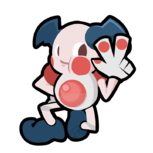

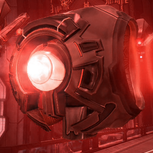

![More information about "[PKHeX Plugin] Feebas Locator"](https://projectpokemon.org/home/uploads/monthly_2018_08/FeebasLocatorGen3.thumb.png.77d3e667641f948ad76200bde077048f.png)


